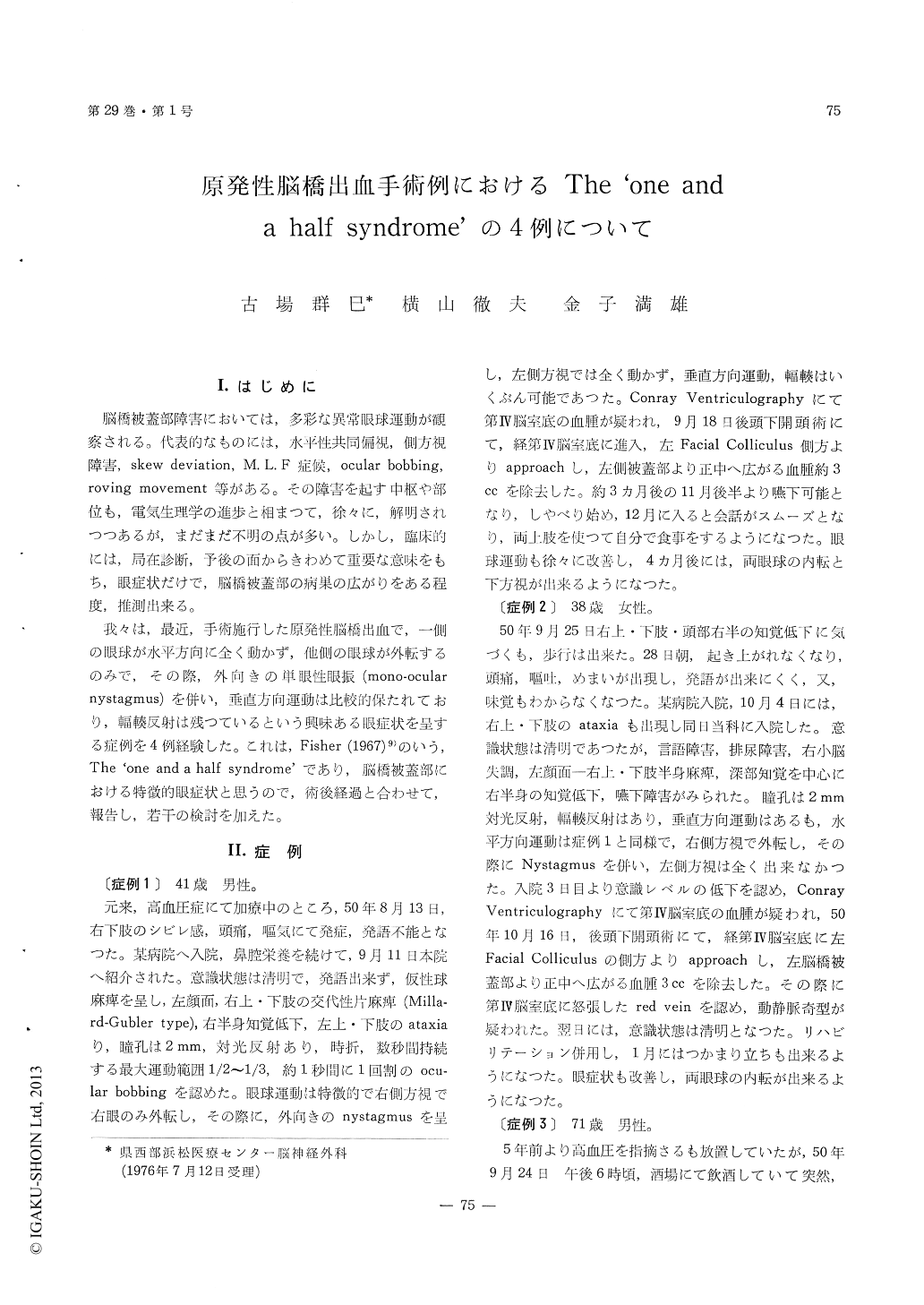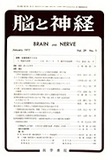Japanese
English
- 有料閲覧
- Abstract 文献概要
- 1ページ目 Look Inside
I.はじめに
脳橋被蓋部障害においては,多彩な異常眼球運動が観察される。代表的なものには,水平性共同偏視,側方視障害,skew deviation, M.L.F症候,ocular bobbing,roving movement等がある。その障害を起す中枢や部位も,電気生理学の進歩と相まつて,徐々に,解明されつつあるが,まだまだ不明の点が多い。しかし,臨床的には,局在診断,予後の面からきわめて重要な意味をもち,眼症状だけで,脳橋被蓋部の病巣の広がりをある程度,推測出来る。
我々は,最近,手術施行した原発性脳橋出血で,一側の眼球が水平方向に全く動かず,他側の眼球が外転するのみで,その際,外向きの単眼性眼振(mono-ocularnystagmus)を併い,垂直方向運動は比較的保たれており,輻?反射は残つているという興味ある眼症状を呈する症例を4例経験した。これは,Fisher(1967)9)のいう,The‘One and a half syndrome’であり,脳橋被蓋部における特微的眼症状と思うので,術後経過と合わせて,報告し,若干の検討を加えた。
In 1967, Fisher named the 'one and a half syn-drome' for a particular ocular movement which is observed in the lesion of pontine tegmentum, when horizontal movement of one eye is totally disabled and the abducence of another eye is only preserved associating mono-ocular nystagmus in the same eye. Vertical movement and convergence are preserved.
We experienced this syndrome in four cases of small localized hematoma of the pontine tegmentum which were all removed under operative microscope. All patients are alive more than 10 months under consciousness and with improved neurological sign. Three of them were probably due to hypertensive hemorrhage and the rest was due to arterio-venous malformation of the pontine tegmentum. Three of them showed this syndrome before operation and observed even after operation. One patient was operated on one and a half hours after the apoplectic attack under semicomatous condition and he im-proved with this syndrome postoperatively..
In most previous reports, this syndrome was noted in severe cases of pontine hematoma or basilar artery thrombosis and they expired soon thereafter. All our cases survived in satisfactory condition and ocular movement could be followed up for a long time.
The mechanism of this syndrome was also dis-cussed.

Copyright © 1977, Igaku-Shoin Ltd. All rights reserved.


